
Iquitos: Gateway to the Amazon Rainforest
Discover Iquitos, Peru's vibrant gateway to the Amazon Rainforest, where indigenous culture, colonial history, and rich biodiversity come together in an unforgettable adventure.
Iquitos, the largest city in the Peruvian Amazon, is a vibrant and unique destination that offers an unforgettable journey into the heart of the rainforest. Nestled on the banks of the Amazon River, Iquitos is only accessible by boat or plane, which adds to its allure and sense of adventure. As you explore the city, you'll find yourself immersed in a bustling atmosphere that blends indigenous culture with the remnants of the rubber boom era. The city is a fascinating mix of old and new, where traditional wooden houses stand alongside colonial-era mansions. Wander through the streets and you'll encounter lively markets, colorful street art, and the warm hospitality of the locals. Don't miss a visit to the Belen Market, where you can discover exotic fruits, fresh fish, and an array of Amazonian herbs and remedies. Iquitos also serves as the perfect launch point for excursions into the Amazon Rainforest. From guided tours to luxury river cruises, there are countless ways to experience the breathtaking biodiversity of this unique ecosystem. Whether you're an avid birdwatcher, a wildlife enthusiast, or simply seeking an adventure, Iquitos promises an experience like no other.
Local tips in Iquitos
- Pack light, breathable clothing and insect repellent for your jungle excursions.
- Don't drink tap water; stick to bottled water to stay safe.
- Visit the Manatee Rescue Center to learn about and support local conservation efforts.
- Try local dishes like juane and tacacho at traditional Amazonian restaurants.
- Hire a local guide for a deeper understanding of the rainforest and its wildlife.
Neighbourhoods in Iquitos
Iquitos: Gateway to the Amazon Rainforest
Iquitos, the largest city in the Peruvian Amazon, is a vibrant and unique destination that offers an unforgettable journey into the heart of the rainforest. Nestled on the banks of the Amazon River, Iquitos is only accessible by boat or plane, which adds to its allure and sense of adventure. As you explore the city, you'll find yourself immersed in a bustling atmosphere that blends indigenous culture with the remnants of the rubber boom era. The city is a fascinating mix of old and new, where traditional wooden houses stand alongside colonial-era mansions. Wander through the streets and you'll encounter lively markets, colorful street art, and the warm hospitality of the locals. Don't miss a visit to the Belen Market, where you can discover exotic fruits, fresh fish, and an array of Amazonian herbs and remedies. Iquitos also serves as the perfect launch point for excursions into the Amazon Rainforest. From guided tours to luxury river cruises, there are countless ways to experience the breathtaking biodiversity of this unique ecosystem. Whether you're an avid birdwatcher, a wildlife enthusiast, or simply seeking an adventure, Iquitos promises an experience like no other.
When is the best time to go to Iquitos?
Iconic landmarks you can’t miss
Iquitos Square
Discover the vibrant heart of Iquitos at Iquitos Square, a lush park where culture and nature intertwine amidst the Amazon's charm.
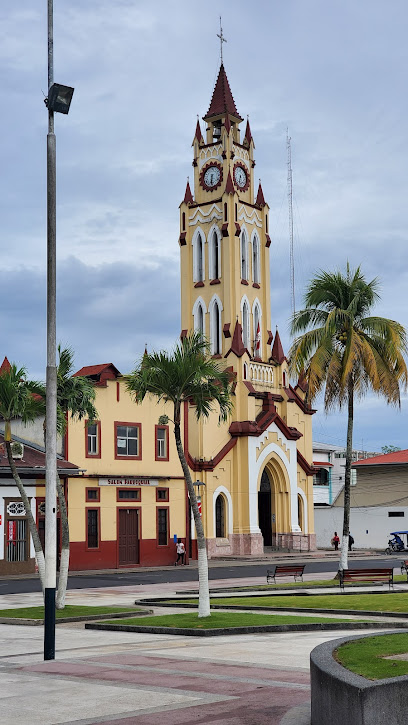
Plaza 28 De Julio
Discover the vibrant culture and lush beauty of Plaza 28 De Julio, Iquitos' beloved city park and social hub rich in history and local charm.

Mercado Belén
Discover the heart of Iquitos at Mercado Belén, where local culture, exotic produce, and traditional crafts come together in a vibrant market experience.
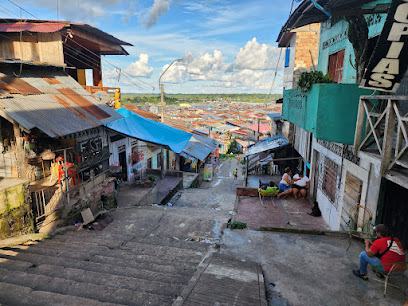
Coronel FAP Francisco Secada Vignetta International Airport
Discover the gateway to the Amazon at Coronel FAP Francisco Secada Vignetta International Airport, where adventure and nature await.
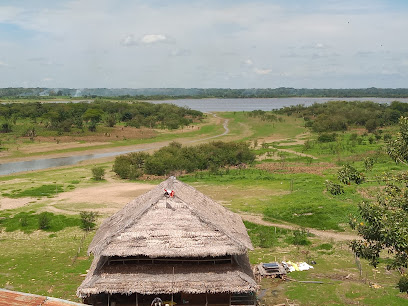
DoubleTree by Hilton Hotel Iquitos
Discover the ultimate blend of comfort and Amazonian charm at DoubleTree by Hilton Hotel Iquitos, your gateway to adventure and relaxation.
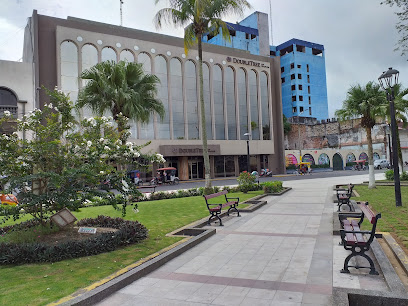
Casa de Fierro
Discover the culinary delights of Casa de Fierro, a historic restaurant in Iquitos offering a taste of the Amazon with every dish.

Amazon Bistro
Discover the flavors of the Amazon at Amazon Bistro in Iquitos, where local cuisine meets a cozy dining atmosphere.
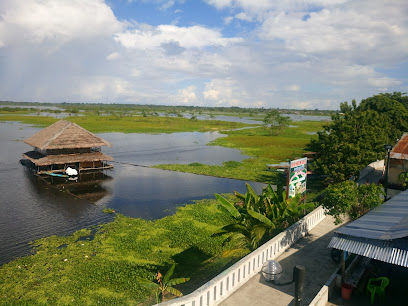
Dawn On The Amazon Café
Discover the charm of Iquitos at Dawn On The Amazon Café, where local flavors meet a cozy ambiance amidst the beauty of the Amazon rainforest.
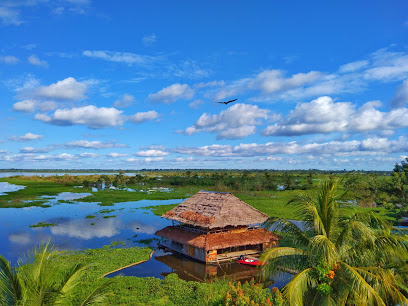
Pilpintuwasi
Explore Pilpintuwasi in Iquitos, Peru, a wildlife rescue service dedicated to the conservation of Amazonian animals and their habitats.
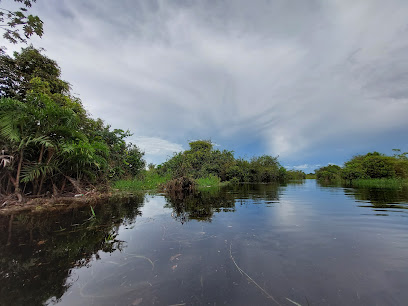
Fundo Pedrito
Experience the stunning landscapes and rich cultural heritage of Fundo Pedrito in Barrio Florido, a must-visit Peruvian tourist attraction for every traveler.
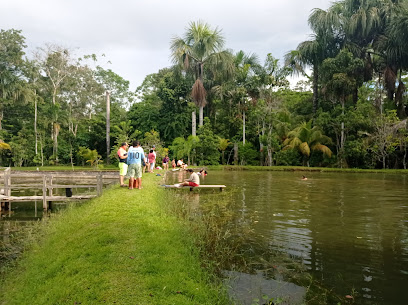
Boat Museum
Explore Iquitos' maritime heritage at the Boat Museum, where the stories of the Amazon River come to life through fascinating exhibits and unique artifacts.
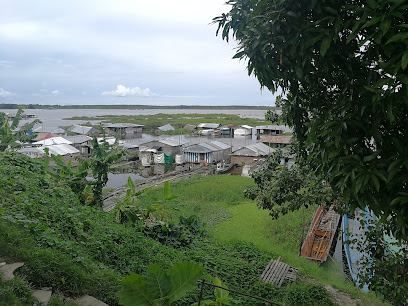
Casa Morey Hotel & Restaurant
Discover the flavors and comforts of Iquitos at Casa Morey Hotel & Restaurant, your ideal base for Amazonian adventures.
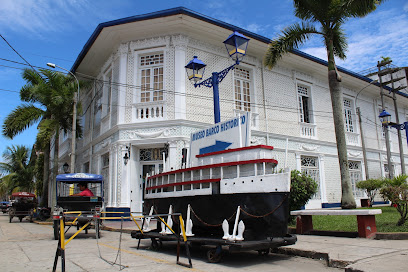
St. John the Baptist Cathedral, Iquitos
Explore the breathtaking St. John the Baptist Cathedral in Iquitos, a stunning architectural marvel and a key cultural landmark in the heart of the Amazon.
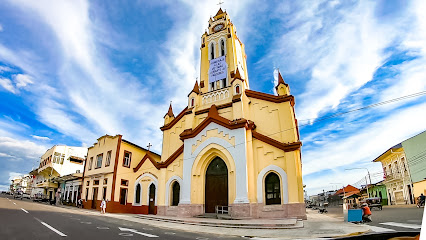
Irapay Amazon Lodge Hotel Asociado Casa Andina
Discover the beauty and adventure of the Amazon at Irapay Amazon Lodge, where comfort meets nature in the heart of Iquitos.

Office of La Isla de los Monos
Immerse yourself in the mission of wildlife conservation at La Isla de los Monos, Iquitos' dedicated animal protection organization.
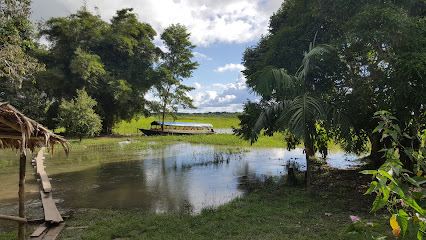
Unmissable attractions to see
Iquitos Square
Explore Iquitos Square, a vibrant park in the heart of Iquitos, Peru, blending natural beauty with rich cultural experiences.
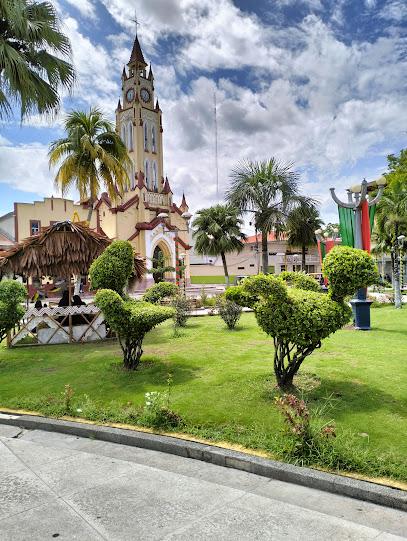
Mercado Belén
Explore the colorful Mercado Belén in Iquitos for a unique blend of local culture, fresh produce, and authentic Peruvian handicrafts.
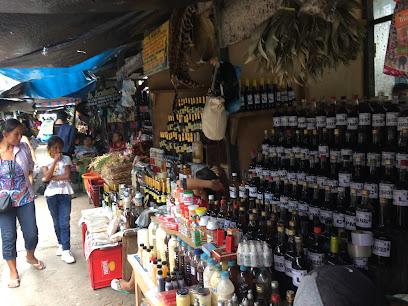
Centro de Rescate Amazónico / Amazon Rescue Center
Explore the Amazon Rescue Center, where wildlife rehabilitation meets conservation education in the heart of the Amazon rainforest.
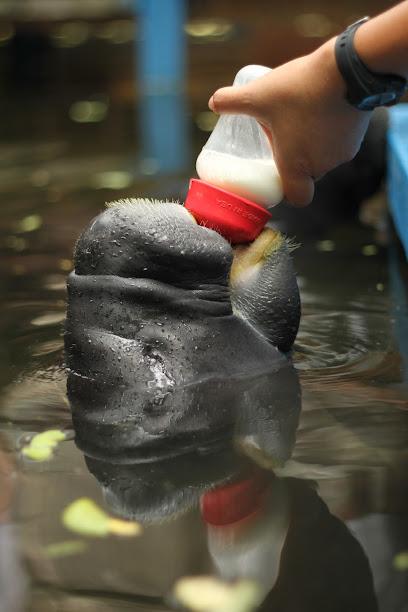
Plaza Bellavista Nanay
Discover the vibrant blend of nature and culture at Plaza Bellavista Nanay in Iquitos, Peru, a perfect spot for relaxation and exploration.
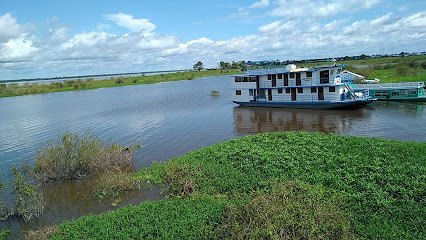
Pilpintuwasi
Explore Pilpintuwasi, Iquitos' wildlife sanctuary, and engage with the Amazon's unique biodiversity while supporting conservation efforts.
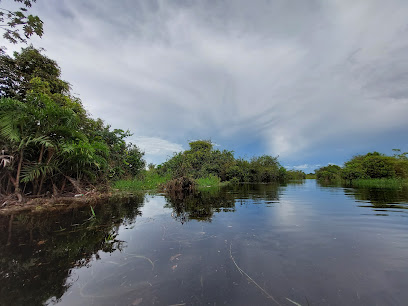
Fundo Pedrito
Experience the tranquility and charm of Fundo Pedrito, a must-visit tourist attraction in Barrio Florido, Peru, surrounded by nature and local agriculture.
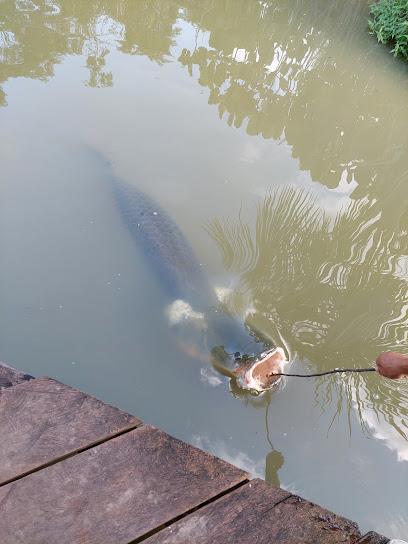
Boat Museum
Explore the unique maritime heritage of the Amazon at the Boat Museum in Iquitos, a captivating experience for all travelers.
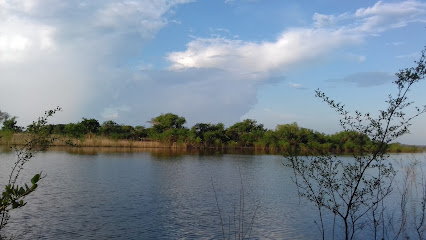
Bosque de Huayo
Explore the lush landscapes of Bosque de Huayo, an Amazonian botanical garden showcasing Peru's stunning biodiversity and tranquility.
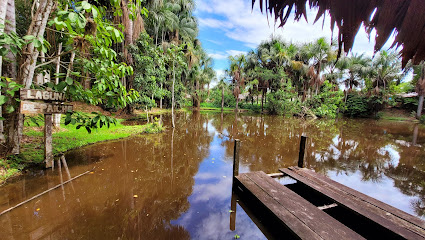
Complejo turístico de Quistococha
Experience the vibrant biodiversity and cultural richness of the Amazon at Complejo Turístico de Quistococha in Iquitos, Peru.
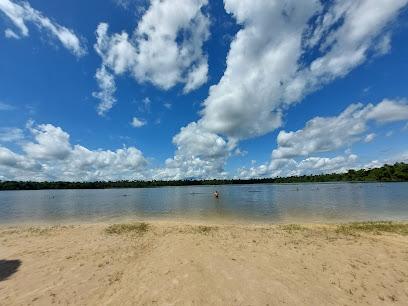
Amazon Experience
Explore the vibrant Amazon rainforest with guided tours and exceptional hospitality at the Amazon Experience in Iquitos.
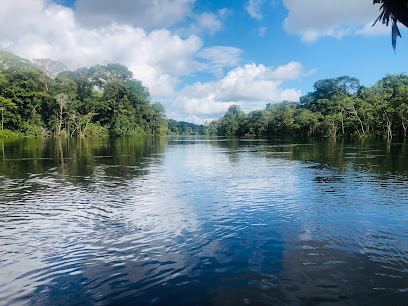
Mi Museo Iquitos
Explore the vibrant culture and heritage of Iquitos at Mi Museo Iquitos, a local history museum nestled in the scenic Parque Zonal.

Amazon Wonder Expeditions
Discover the enchanting Amazon rainforest with Amazon Wonder Expeditions – your ultimate adventure awaits in Iquitos, Peru.

Maniti Expeditions Amazon Eco-Lodge & Tours Iquitos
Experience the Amazon like never before at Maniti Expeditions Eco-Lodge, where adventure meets comfort in the heart of nature.

Kelwin's Amazon Adventures
Explore the Amazon's breathtaking beauty with Kelwin's Amazon Adventures, your gateway to unforgettable rainforest experiences in Iquitos.
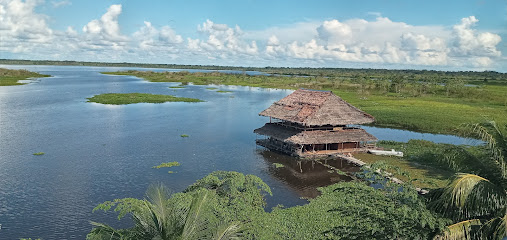
Amazon Explorer
Explore the Amazon rainforest with Amazon Explorer, your premier tour operator for unforgettable outdoor adventures in Iquitos, Peru.

Essential places to dine
Al Frio y al Fuego
Experience authentic Peruvian cuisine at Al Frio y al Fuego - a must-visit destination for food enthusiasts exploring Peru.
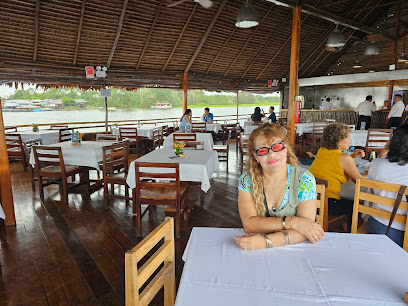
Blanquita
Experience the vibrant flavors of Peru at Blanquita in Iquitos – where local ingredients meet culinary artistry.
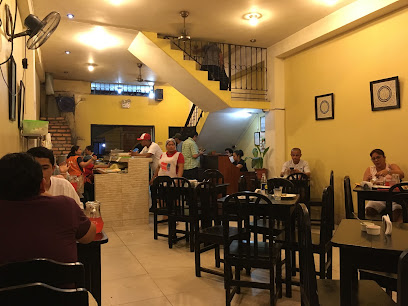
La Casa De Las Enchiladas
Experience authentic Peruvian enchiladas at La Casa De Las Enchiladas in Iquitos – a must-visit restaurant blending rich flavors with local culture.
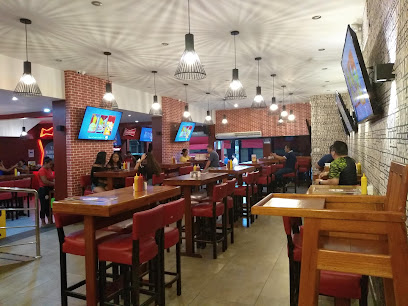
Ari's Burger
Experience the best burgers in Iquitos at Ari's Burger, where local flavors meet casual dining in a vibrant atmosphere.
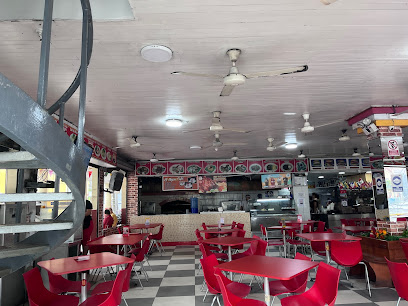
Embarcadero Restaurante Al Frío y al Fuego
Experience exquisite Peruvian cuisine with stunning river views at Embarcadero Restaurante Al Frío y al Fuego in Iquitos.
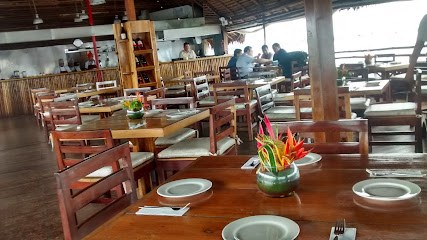
Restaurante Fitzcarraldo
Experience authentic Peruvian flavors at Restaurante Fitzcarraldo in Iquitos – a culinary journey awaits!
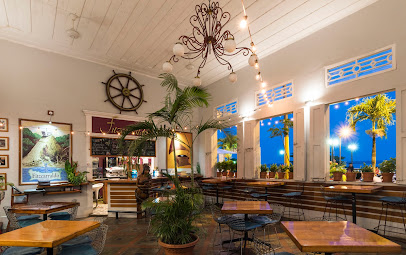
Ikiitu
Discover authentic Peruvian cuisine at Ikiitu in Iquitos - where vibrant flavors meet cultural charm in every dish.
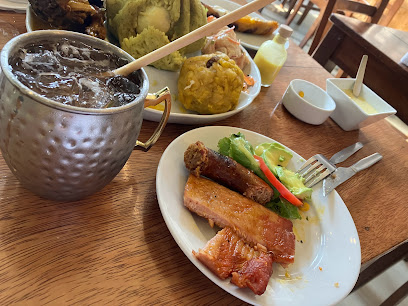
Cafetería Cafezinho
Experience the essence of Peruvian coffee culture at Cafetería Cafezinho in Iquitos - where every sip tells a story.
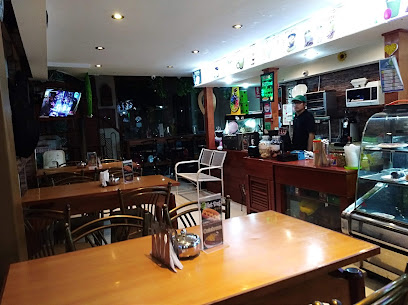
Chifa Long Fung
Discover the perfect blend of traditional Chinese cuisine and local flavors at Chifa Long Fung in Iquitos – a culinary gem worth exploring.
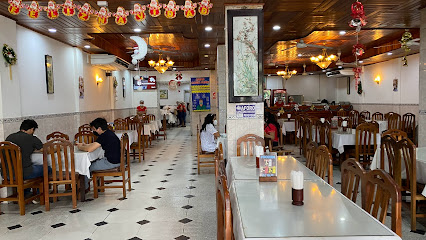
THE YELLOW ROSE OF TEXAS RESTAURANT
Discover an exquisite blend of American, Belgian, Chinese, and Russian cuisines at The Yellow Rose of Texas Restaurant in Iquitos.
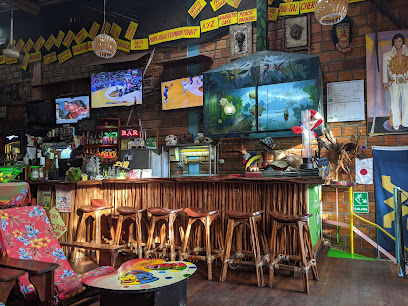
Amazon Bistro
Discover the flavors of Peru at Amazon Bistro in Iquitos - a perfect blend of local cuisine and warm hospitality.
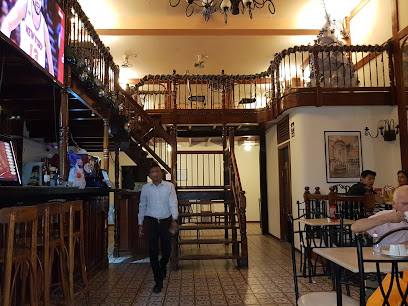
La Mona Cafetería
Experience delightful brunches at La Mona Cafetería, where delicious food meets furry companionship in Iquitos.
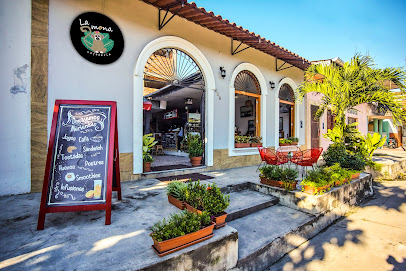
Taquito Feroz
Discover authentic Peruvian flavors at Taquito Feroz, where delicious tacos and vibrant dishes await in the heart of Iquitos.

Pizzería Iquitos
Experience authentic Italian cuisine with a local twist at Pizzería Iquitos - where every bite tells a story.
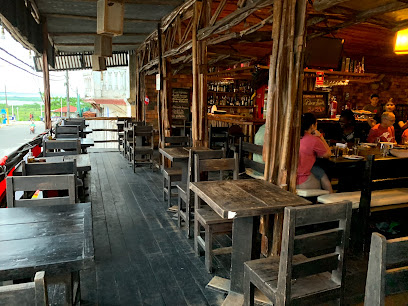
Las Terrazas Iquitos
Discover Las Terrazas Iquitos: A unique gastropub experience blending local flavors and stunning views along the Amazon River.
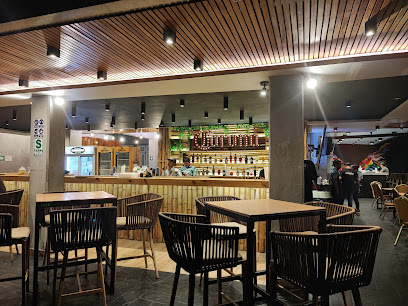
Markets, malls and hidden boutiques
Mercado Belén
Explore Mercado Belén: A bustling market in Iquitos, Peru, showcasing local culture, crafts, and delicious traditional cuisine.
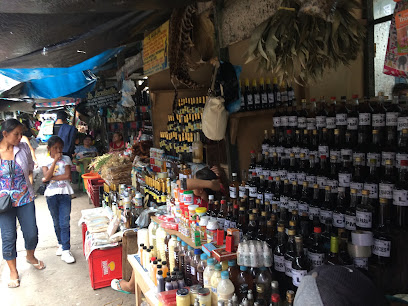
Mall Aventura Iquitos
Discover the vibrant shopping experience at Mall Aventura Iquitos – where modernity meets the heart of the Amazon.
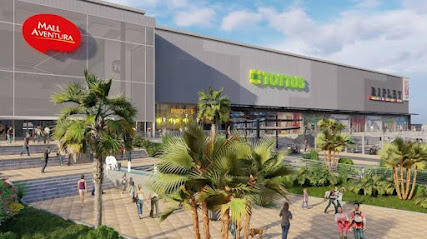
Pequeños Gustitos SRL
Discover the delightful flavors of Iquitos at Pequeños Gustitos SRL, your go-to pastry shop for a sweet escape in the heart of the Amazon.

SuperMercado Ok
Experience the vibrant flavors of Peru at SuperMercado Ok, Iquitos' premier shopping destination for local products and fresh produce.
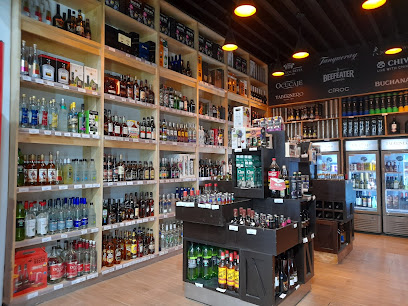
Ecotienda Runa Thani
Discover the essence of Iquitos at Ecotienda Runa Thani, where organic living meets local heritage in a sustainable shopping experience.
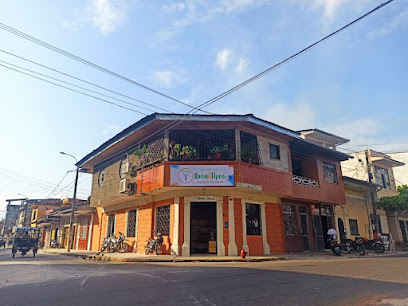
Tiendas Él - Iquitos
Explore Tiendas Él in Iquitos for trendy clothing, from youth fashion to formal wear, offering a unique shopping experience in the heart of the Amazon.
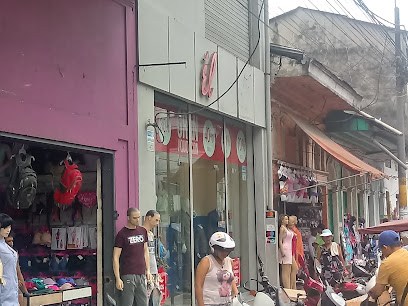
Music Shop - Iquitos
Discover the heart of Amazonian music at the Music Shop in Iquitos, where rich cultural heritage meets a vibrant array of instruments.
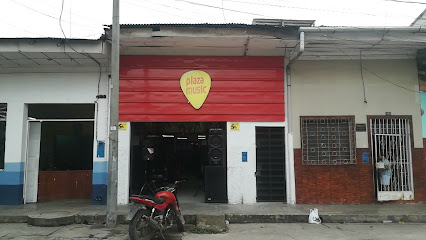
Retail and wholesale market of Belen
Explore the bustling Belen Market in Iquitos, where local culture, fresh produce, and unique crafts come alive in an unforgettable shopping experience.
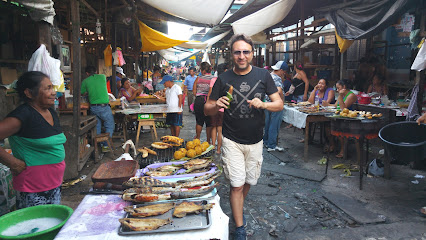
Nemesis Games
Explore the vibrant world of gaming at Nemesis Games in Iquitos – a must-visit for gamers and tourists seeking excitement and entertainment.
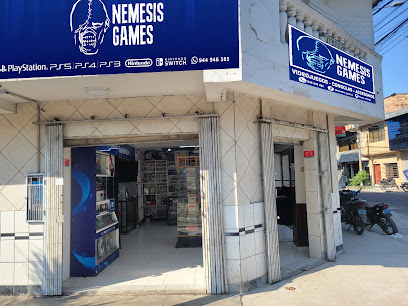
Floreria, Floristeria Grizz
Discover Iquitos' hidden gem, Floreria, Floristeria Grizz, your go-to destination for exquisite flowers, delightful chocolates, and unique gifts.
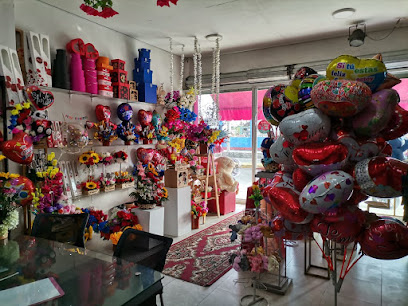
SOFVE
Explore unique fashion at SOFVE in Iquitos, where local style meets contemporary trends for an unforgettable shopping experience.

La Tiendita de Ruth
Explore the vibrant culture of Iquitos through unique handicrafts and souvenirs at La Tiendita de Ruth, a local gift shop treasure.

Las Delicias
Discover the flavors of the Amazon at Las Delicias, Iquitos' premier grocery store, offering local and international culinary delights.
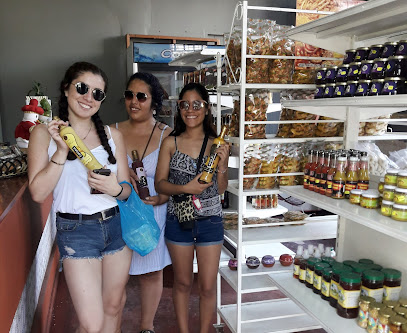
DECOPACK-IQUITOS
Explore DECOPACK-IQUITOS for unique Amazonian gifts, handcrafted treasures, and cultural souvenirs that embody the spirit of Iquitos.
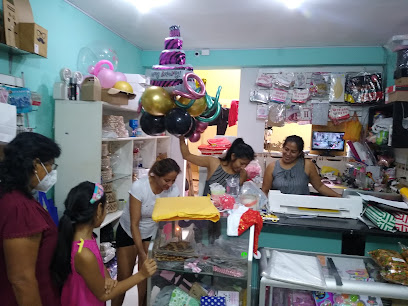
Sex Shop Iquitos La Diablis Boutique
Discover the playful spirit of Iquitos at La Diablis Boutique, where unique toys and gifts await every adventurous traveler.
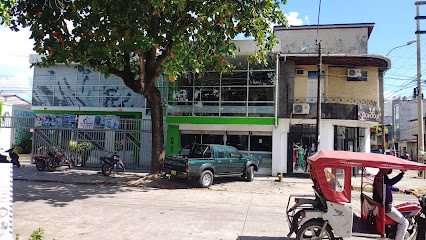
Essential bars & hidden hideouts
Arandú Bar
Discover the lively Arandú Bar in Iquitos, Peru, where vibrant ambiance meets a diverse drink menu for an unforgettable night out.
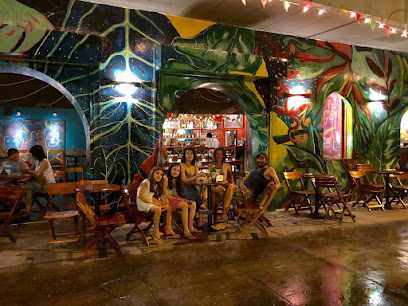
El Musmuqui 2
Experience the vibrant nightlife of Iquitos at El Musmuqui 2, where delicious drinks and live music create unforgettable memories.
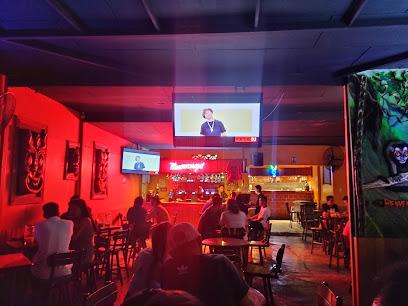
A Chelear
Discover the vibrant nightlife at A Chelear in Iquitos, where eclectic drinks and a lively atmosphere create unforgettable experiences.
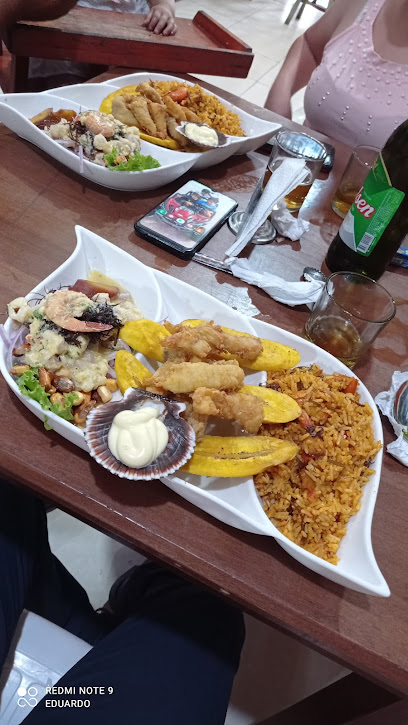
Pishcota's Bar
Experience the vibrant nightlife of Iquitos at Pishcota's Bar, where friendly vibes and delicious drinks await you!
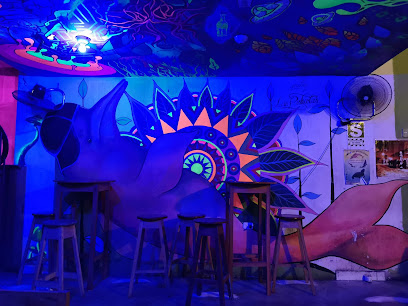
El Refugio
Discover El Refugio, a cozy bar in Iquitos, Peru, offering local drinks, live music, and an authentic taste of the vibrant nightlife.
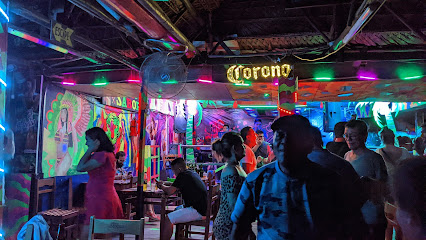
El Templo - Rock Bar
Experience the vibrant nightlife of Iquitos at El Templo, where live rock music and refreshing drinks create unforgettable moments.
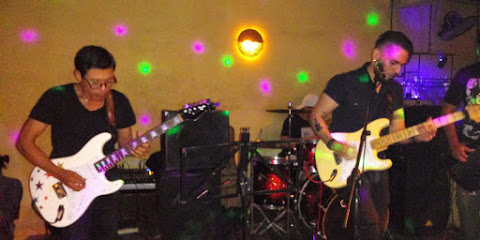
Mezclas
Discover the lively spirit of Iquitos at Mezclas, a vibrant bar where locals and tourists come together to enjoy delicious drinks and live music.
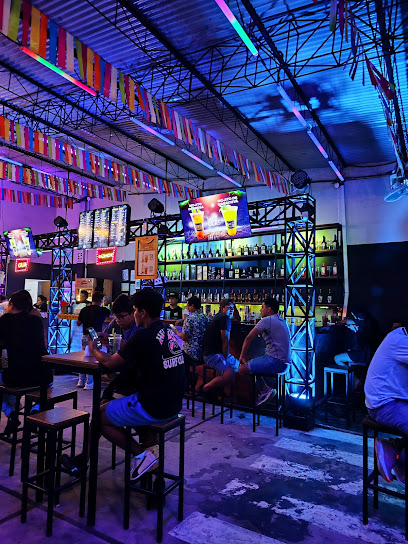
Yurus Restobar
Discover the vibrant flavors of Iquitos at Yurus Restobar, where local cuisine meets a lively bar atmosphere in the heart of the Amazon.

El Musmuqui
Experience the vibrant nightlife of Iquitos at El Musmuqui, where local culture meets delicious cocktails in a lively atmosphere.
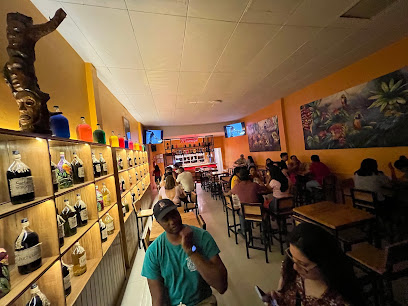
Cero Bar & Catering
Experience the vibrant atmosphere of Cero Bar & Catering in Iquitos, where local flavors and creative cocktails come together for an unforgettable night.
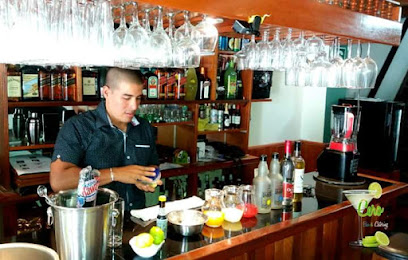
Bunker Bar
Experience the vibrant nightlife of Iquitos at Bunker Bar, where crafted cocktails meet a lively atmosphere and local camaraderie.
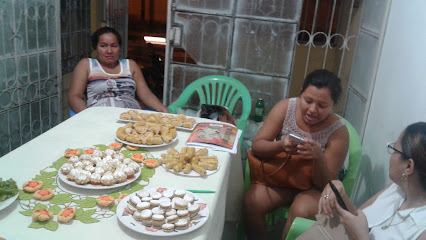
LATIDOS BAR
Discover the vibrant nightlife of Iquitos at LATIDOS BAR, where local culture meets a diverse menu of drinks and delicious bites.
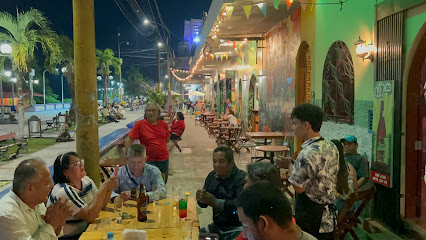
Olimpo Bar Iquitos
Discover the vibrant nightlife of Olimpo Bar in Iquitos, where refreshing drinks and lively atmosphere come together for an unforgettable experience.
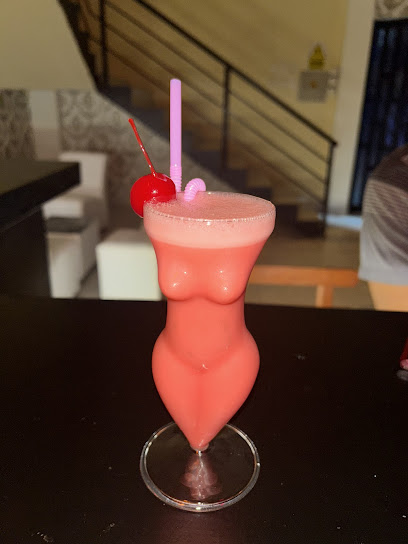
Mastur bar
Discover Iquitos' vibrant nightlife at Mastur Bar, where refreshing cocktails and a lively atmosphere create unforgettable memories.

Shisha lounge restobar iquitos
Discover the culinary fusion at Shisha Lounge Restobar, a top gastropub in Iquitos offering vibrant dishes and a lively atmosphere.
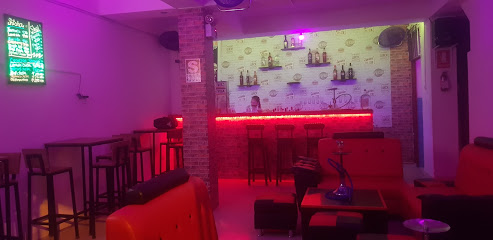
Local Phrases
-
- HelloHola
[oh-la] - GoodbyeChau
[chow] - YesSí
[see] - NoNo
[noh] - Please/You're welcomePor favor/De nada
[por fah-vor/de nah-dah] - Thank youGracias
[grah-see-as] - Excuse me/SorryDisculpe/Perdón
[dee-skool-peh/pehr-dohn] - How are you?¿Cómo estás?
[koh-moh ess-tahs] - Fine. And you?Bien. ¿Y tú?
[bee-en. ee too] - Do you speak English?¿Hablas inglés?
[ah-blahs een-glays] - I don't understandNo entiendo
[noh ehn-tyen-doh]
- HelloHola
-
- I'd like to see the menu, pleaseMe gustaría ver el menú, por favor
[meh goos-tah-ree-ah vehr ehl meh-noo, por fah-vor] - I don't eat meatNo como carne
[noh koh-moh kahr-neh] - Cheers!¡Salud!
[sah-lood] - I would like to pay, pleaseMe gustaría pagar, por favor
[meh goos-tah-ree-ah pah-gahr, por fah-vor]
- I'd like to see the menu, pleaseMe gustaría ver el menú, por favor
-
- Help!¡Ayuda!
[ah-yoo-dah] - Go away!¡Vete!
[veh-teh] - Call the Police!¡Llama a la Policía!
[yah-mah ah lah poh-lee-see-ah] - Call a doctor!¡Llama a un médico!
[yah-mah ah oon meh-dee-koh] - I'm lostEstoy perdido/a
[ehs-toy pehr-dee-doh/dah] - I'm illEstoy enfermo/a
[ehs-toy ehn-fehr-moh/ah]
- Help!¡Ayuda!
-
- I'd like to buy...Me gustaría comprar...
[meh goos-tah-ree-ah kohm-prahr] - I'm just lookingSolo estoy mirando
[soh-loh ehs-toy mee-rahn-doh] - How much is it?¿Cuánto cuesta?
[kwan-toh kwehs-tah] - That's too expensiveEso es muy caro
[eh-soh es moo-ee kah-roh] - Can you lower the price?¿Puedes bajar el precio?
[pweh-dehs bah-hahr ehl pree-syoh]
- I'd like to buy...Me gustaría comprar...
-
- What time is it?¿Qué hora es?
[keh oh-rah ehs] - It's one o'clockEs la una
[ehs lah oo-nah] - Half past (10)Media (diez)
[meh-dee-ah (dyehs)] - MorningMañana
[mah-nyah-nah] - AfternoonTarde
[tahr-deh] - EveningNoche
[noh-cheh] - YesterdayAyer
[ah-yehr] - TodayHoy
[oy] - TomorrowMañana
[mah-nyah-nah] - 1Uno
[oo-noh] - 2Dos
[dohs] - 3Tres
[trehs] - 4Cuatro
[kwah-troh] - 5Cinco
[seen-koh] - 6Seis
[seys] - 7Siete
[syeh-teh] - 8Ocho
[oh-choh] - 9Nueve
[nweh-veh] - 10Diez
[dyehs]
- What time is it?¿Qué hora es?
-
- Where's a/the...?¿Dónde está...?
[dohn-deh ehs-tah] - What's the address?¿Cuál es la dirección?
[kwal ehs lah dee-rehk-syon] - Can you show me (on the map)?¿Puedes mostrarme (en el mapa)?
[pweh-dehs mohs-trar-meh (ehn ehl mah-pah)] - When's the next (bus)?¿Cuándo es el próximo (bus)?
[kwan-doh ehs ehl proh-ksee-moh (boos)] - A ticket (to ....)Un boleto (a ...)
[oon boh-leh-toh (ah ...)]
- Where's a/the...?¿Dónde está...?
History of Iquitos
-
The region around Iquitos has been inhabited for thousands of years by various indigenous groups, including the Yagua, Boras, and Huitotos. These communities thrived in the Amazon rainforest, developing complex societies that were deeply connected to the river and jungle. They practiced sustainable agriculture, fishing, and hunting, and their rich cultural traditions included music, dance, and storytelling.
-
In the late 17th and early 18th centuries, Jesuit missionaries arrived in the region with the aim of converting the indigenous populations to Christianity. They established missions along the Amazon River, including in what is now Iquitos. These missions introduced new agricultural techniques and crops, as well as education and healthcare, but also disrupted traditional ways of life and led to significant cultural changes.
-
Iquitos was officially founded in 1864, although it had existed as a small indigenous settlement long before that. It began as a Jesuit mission but gradually grew into a more significant settlement due to its strategic location on the Amazon River. The town's growth was initially slow, but it gained importance as a trading post and regional center.
-
The late 19th and early 20th centuries saw a dramatic transformation in Iquitos due to the rubber boom. The discovery of the commercial potential of rubber trees led to a massive influx of wealth and people into the region. Iquitos became a bustling hub of activity, attracting entrepreneurs, adventurers, and laborers from around the world. This period saw the construction of grand buildings, such as the Iron House designed by Gustave Eiffel, which still stand as reminders of this opulent era.
-
The rubber boom eventually came to an end in the early 20th century, leading to a period of economic decline for Iquitos. The development of rubber plantations in Southeast Asia, which were more accessible and cheaper to exploit, made the Amazonian rubber industry less competitive. The city faced significant challenges as the influx of wealth and population dwindled, leaving behind a legacy of both progress and exploitation.
-
Today, Iquitos is a vibrant city that blends its historical legacy with modern developments. It serves as a gateway to the Peruvian Amazon and is a focal point for eco-tourism and cultural exploration. The city's culture is a rich tapestry of indigenous heritage, colonial influences, and contemporary Peruvian traditions. Festivals, markets, and local cuisine offer visitors a chance to immerse themselves in the unique atmosphere of Iquitos. Additionally, the city is an important center for scientific research and conservation efforts aimed at preserving the Amazon rainforest and its biodiversity.
Iquitos Essentials
-
Iquitos is located in the northeastern region of Peru, deep in the Amazon Rainforest. The city is inaccessible by road, so the primary means of reaching Iquitos are by air or river. The most common route is to fly into Coronel FAP Francisco Secada Vignetta International Airport (IQT) from Lima, which takes about 1.5 to 2 hours. Alternatively, adventurous travelers can take a long boat journey up the Amazon River from cities like Yurimaguas or Pucallpa, which can take several days.
-
Within Iquitos, the primary modes of transportation are mototaxis (auto rickshaws) and motorcycles. These are affordable and readily available. For more comfort, you can also use traditional taxis. Public buses are limited but available for certain routes. Walking is an excellent option for exploring the central parts of the city. Boat transportation is essential for visiting nearby villages and attractions along the river.
-
The official currency in Peru is the Peruvian Sol (PEN). Credit cards are accepted in many hotels, restaurants, and larger shops in Iquitos, but it is advisable to carry cash for smaller establishments and markets. ATMs are available throughout the city, especially in the central areas, but it's wise to withdraw sufficient cash before heading to more remote locations.
-
Iquitos is generally safe for tourists, but like any city, it has areas with higher crime rates. It's best to avoid the Belen Market area after dark and be cautious in crowded places where pickpocketing can occur. Stick to well-lit and populated areas at night, and avoid displaying valuable items. Always use registered taxis or mototaxis, especially when traveling at night.
-
In case of emergency, dial 105 for the police and 106 for medical emergencies. The main hospital in Iquitos is the Hospital Regional de Loreto. Pharmacies are plentiful and can provide over-the-counter medications for minor health issues. It is highly recommended to have travel insurance that covers medical emergencies, including evacuation by air.
-
Fashion: Do wear lightweight, breathable clothing due to the hot and humid climate. Avoid wearing flashy jewelry or expensive accessories. Religion: Do respect local customs and traditions. Modest clothing is appreciated when visiting religious sites. Public Transport: Do negotiate the fare before getting into a mototaxi. Don't expect public buses to run on a strict schedule. Greetings: Do greet people with a friendly 'Buenos días' (Good morning) or 'Buenas tardes' (Good afternoon). Eating & Drinking: Do try local dishes like juanes and tacacho. Don’t drink tap water; always opt for bottled water.
-
To experience Iquitos like a local, visit the Belen Market early in the morning to see a vibrant display of Amazonian produce and goods. Take a stroll along the Malecon Tarapaca for beautiful views of the Amazon River. Engage with local guides for authentic jungle tours and visits to indigenous communities. Don't miss the opportunity to see the unique floating houses in the Belen district during the rainy season.
Trending Landmark in Iquitos
-
Iquitos Square
-
Plaza 28 De Julio
-
Mercado Belén
-
Coronel FAP Francisco Secada Vignetta International Airport
-
DoubleTree by Hilton Hotel Iquitos
-
Casa de Fierro
-
Amazon Bistro
-
Dawn On The Amazon Café
-
Pilpintuwasi
-
Fundo Pedrito
-
Boat Museum
-
Casa Morey Hotel & Restaurant
-
St. John the Baptist Cathedral, Iquitos
-
Irapay Amazon Lodge Hotel Asociado Casa Andina
-
Office of La Isla de los Monos
Nearby Cities to Iquitos
-
Things To Do in Macas
-
Things To Do in Tena
-
Things To Do in Cuenca
-
Things To Do in Ambato
-
Things To Do in Loja
-
Things To Do in Quito
-
Things To Do in Ibarra
-
Things To Do in Pasto
-
Things To Do in Otavalo
-
Things To Do in Mindo
-
Things To Do in Guayaquil
-
Things To Do in Neiva
-
Things To Do in Popayán
-
Things To Do in Huaraz
-
Things To Do in Trujillo













